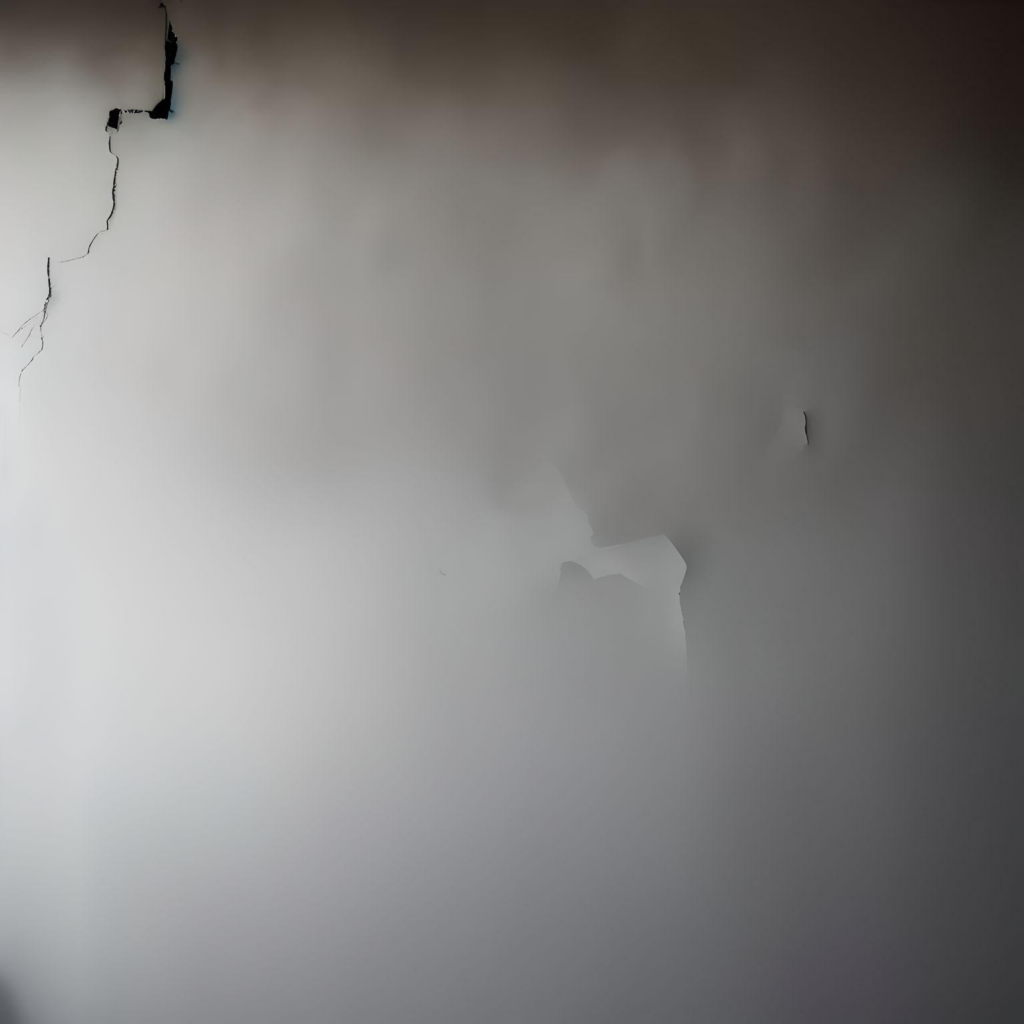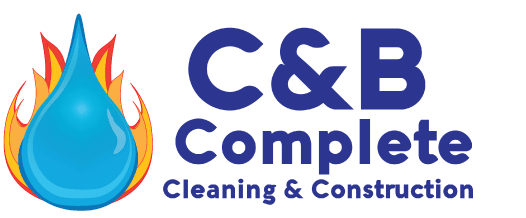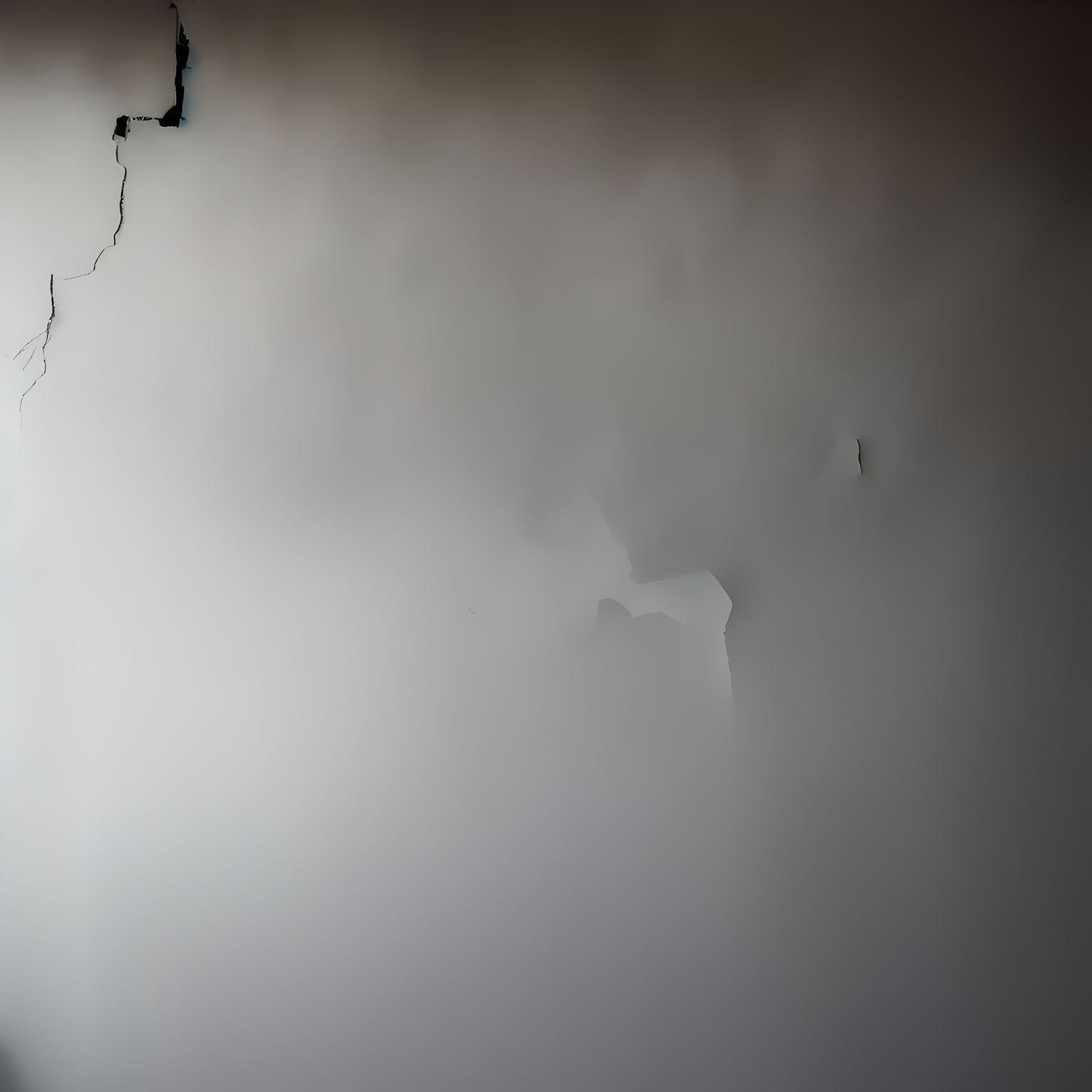Smoke damaged walls can pose a challenging task when it comes to cleaning and restoration. The damage caused by smoke and soot can leave stubborn stains and a lingering odor. Understanding the proper techniques and methods for addressing these issues is essential for successful restoration and ensuring a healthy living environment.
One effective approach to tackle smoke damage is by using a combination of cleaning solutions and techniques designed to lift residue and eliminate unpleasant odors. It is important to act promptly, as delaying the cleanup process can potentially result in more severe and harder-to-remove stains. Equipping yourself with the right knowledge and tools will empower you to address and fix smoke damaged walls, restoring your home to its original condition.
Identifying Smoke Damage
Smoke damage can often be overlooked in the aftermath of a house fire, but it is essential to address it properly. Identifying smoke damage on walls is the first step towards fixing and restoring the affected surfaces.
Smoke damage occurs when toxic smoke and soot from a fire leave behind a residue on walls, ceilings, and other surfaces. This residue can include tar, carbon, and other contaminants that not only damage the surfaces but can also cause harmful effects on your home’s air quality. Additionally, smoke damage might lead to mold growth if not dealt with promptly and effectively.
To identify smoke damage, look for visible signs such as discoloration on walls and ceilings, particularly in areas closest to the origin of the fire. Smoke stains may vary in color from yellow to black, depending on the materials burned and the intensity of the fire. Another sign of smoke damage is the presence of a strong, lingering odor caused by the smoke residue.
Besides the visible signs, it is crucial to inspect your walls for any hidden damage. Smoke residue can seep into small cracks and crevices, making it harder to spot. Using a flashlight, closely examine the surfaces for any traces of smoke stains, soot, or other irregularities.
Remember that mold can develop alongside smoke damage, especially if the fire was extinguished with water. As you inspect your walls, keep an eye out for any signs of mold growth, such as dark or fuzzy patches, as well as a musty odor.
In conclusion, identifying smoke damage on your walls is a crucial step before initiating the cleanup process. By thoroughly examining the affected areas and recognizing the signs of smoke damage, including stains, odors, and potential mold growth, you can ensure a proper restoration for your home.
Preparing for Cleanup
Before starting the process of fixing smoke damaged walls, it is essential to prioritize safety and have the right equipment on hand. Always wear protective gear such as gloves, goggles, and a face mask to prevent inhaling potentially harmful particles and protect your skin from irritation.
Choose a well-ventilated area to work in, as the chemicals required for smoke damage cleanup can have strong odors or fumes. Open doors and windows to circulate fresh air and ensure appropriate air circulation during the cleaning process. It is also crucial to have adequate lighting so you can identify and address stains effectively.
Prepare the surrounding area by covering floors and furniture with drop cloths to protect them from soot and cleaning product residue. This protection measure will make the cleanup process easier and prevent any accidental damage to your belongings.
Gather all necessary equipment in advance to streamline the cleanup process. This includes items such as scaffolding or ladders, sponges, clean rags, buckets, and cleaning solutions suitable for smoke damage (mild soap or detergent, tri-sodium phosphate, or a half vinegar and half water solution). Be sure to have multiple sponges or rags available as you will likely need to change them frequently during the cleaning process.
Before beginning the actual cleanup, consult a fire marshal or other professional to ensure the structure is safe to re-enter and you have permission to begin cleaning. This step will protect you from potential hazards related to structural integrity and prevent further complications.
Initial Cleaning Steps
Before attempting to clean and fix smoke damaged walls, it is essential to take a few initial steps. These actions will ensure a thorough and safe cleaning process.
Start by conducting a room-by-room inspection of the affected areas, taking note of any deep stains, heavy layers of soot, or light discoloration on walls and ceilings. Make sure to wear a mask and gloves for safety purposes.
To remove loose debris from the walls, it is important to use a vacuum cleaner with an upholstery brush attachment. This initial step will make it easier to clean the surfaces more effectively in the following stages.
Make sure to have a dry chemical sponge on hand toaddress areas that have excessive soot buildup. Rubbing the sponge over the surfaces helps to lift away the soot without smearing it or causing further damage to the walls.
For effective cleaning of smoke damaged walls, especially drywall, a solution made from trisodium phosphate (TSP) is recommended. You can create a mixture by combining one tablespoon of TSP with one gallon of warm water. It’s important to wear gloves and goggles while using TSP, as it is a caustic substance.
To begin the actual cleaning process, dip a clean cloth or sponge into the TSP solution and start at the bottom of the wall, gently scrubbing in circular motions. Work your way up the wall in small sections, taking care not to soak the surface. Once you’ve cleaned each section, rinse it thoroughly with a damp cloth to remove any remaining residue. Repeat this process until you’ve cleaned the entire affected area.
Remember to keep your cleaning approach confident, knowledgeable, neutral, and clear. With patience and diligence, you can effectively remove smoke damage from your walls and restore them to their original condition.
Removing Odor and Stains
Removing the odor and stains caused by smoke damage on your walls can be a daunting task, but with the right approach and tools, you can effectively restore the appearance of your walls. To achieve optimal results, let’s dive into the process of deodorizing and removing stains from smoke damaged walls.
First, it’s essential to clean the walls to remove any lingering smoke smell. One effective solution for this is a mixture of white vinegar and warm water. Combine one cup of white vinegar with two cups of warm water, and use a sponge to gently scrub the walls. The acidic nature of vinegar helps break down and eliminate the smoke odor.
If nicotine stains are present on the walls, adding half a cup of baking soda to the vinegar solution can further assist in breaking down and removing these stubborn stains. When cleaning, focus on small areas at a time, and make sure to frequently rinse the sponge with clean water to avoid smearing the stains on other parts of the wall.
In some cases, smoke odor may persist even after thorough cleaning. In this situation, using a deodorizing solution or odor-absorbing gel can help neutralize and eliminate the remaining smell.
To fully remove any lingering traces of smoke damage, it may be necessary to prime and repaint the walls. When choosing a primer, opt for a product specifically designed to seal in smoke damage and prevent stains from seeping through the new paint layer. With a fresh coat of paint, your walls will not only look clean but will also have an added defense against any remaining odor or stains.
By using these methods and paying close attention to the affected areas, you can confidently restore your walls to their original condition, free from smoke damage, nicotine stains, and unpleasant odors.
Deep Cleaning Methods
When dealing with smoke-damaged walls, it’s essential to use proper deep cleaning methods to effectively address the issue. This includes taking care of the ceilings, windows, floors, furniture, and wood surfaces within the affected area.
Begin by addressing the ceilings and windows, as these can be common places for smoke and soot to accumulate. A mixture of white vinegar and warm water can be an effective cleaning solution for these surfaces1. First, dampen a soft sponge with this solution and gently scrub the areas. Next, rinse with clear, warm water and pat dry using a clean cloth.
Cleaning the walls comes next. For painted walls, a solution of half vinegar and half water is recommended2. This will help remove the stains without damaging the paintwork. With a soft sponge, scrub the walls and repeat the rinsing and drying process as previously described.
For wood surfaces, using a dedicated wood cleaning product or slightly diluted white vinegar will yield the best results. Apply the product or solution onto a cloth and gently rub it onto the wooden areas. Follow by wiping with a damp, clean cloth and then drying thoroughly.
When it comes to floors and furniture, opt for a cleaning method that suits the particular material: hard flooring may require sweeping or vacuuming followed by a gentle mopping with a suitable cleaner, while carpets and upholstery might benefit from steam cleaning.
One effective tool for addressing smoke damage is the chemical sponge or dry cleaning sponge. These sponges are designed to absorb soot and dirt without smearing or spreading the residue. They can be particularly useful for areas where water-based cleaning methods may not be suitable.
Another powerful cleaning solution for removing smoke and soot stains is trisodium phosphate (TSP)3. This cleaning agent can be mixed with water to create a solution that effectively cleans various surfaces. However, it’s crucial to wear gloves and follow the manufacturer’s instructions when working with TSP, as it can be potentially hazardous.
By following these deep cleaning methods and using appropriate cleaning solutions, you can effectively tackle smoke-damaged walls and other surfaces in your home.
Damage Assessment and Repairs
When dealing with smoke-damaged walls, the first step is to assess the extent of the damage. This assessment will determine the required repairs and help you, the homeowner, understand the potential costs. If possible, consult an experienced professional or an insurance company to help with this process. They will consider factors like fire damage, water damage, and permanent damage to the walls and their materials.
Start remediation as soon as possible to prevent further damage and minimize restoration costs. Addressing smoke damage promptly can help lower the risk of permanent damage and make the cleaning process more effective. Ensure proper ventilation in the affected area by opening windows and using fans. If required, use a dehumidifier to reduce humidity levels, especially if water damage accompanies the smoke damage.
Begin cleaning using dry methods before moving on to wet techniques. Dry cleaning helps remove loose soot and smoke particles, minimizing the risk of smearing or worsening the damage. Use a dry sponge or cloth for this task. For more stubborn residue, switch to a wet cleaning approach, like using a mild detergent solution. Be cautious with water use, as excessive moisture could lead to rust, mold growth, and other issues.
For extensive damage, it might be necessary to replace parts of the wall, such as drywall or panels. In such cases, consult a professional who specializes in smoke damage restoration. They will provide the appropriate guidance and expertise.
Throughout the process, maintain open communication with your insurance company. Document the damage and repairs, and keep records of all associated expenses. Proper documentation will ensure a smoother claim process and help recover the financial impact of the property damage.
By following these steps, you will effectively address the smoke damage on your walls, restoring your home to a safe and comfortable environment. Expert guidance, prompt action, and thorough cleaning techniques are essential to prevent lasting damage and maintain the quality of your home.

Repainting and Restoration
One of the first steps to fix smoke damaged walls is to clean the affected area thoroughly. It is essential to remove smoke stains, nicotine, tar, and carbon residue from the drywall as they can interfere with primer and paint adhesion and help eradicate bad odor source.
Before applying any paint, it’s crucial to dry clean the walls as it helps to neutralize the damage caused by smoke and fire source. You can use a vacuum cleaner with a brush attachment or a dry sponge to remove dry soot and debris from the surface.
Once the walls are clean and dry, using a high-quality primer is the next step in repainting. The primer will help seal any remaining odors and stains and provide a solid base for the new paint. Choose a primer specifically designed for painting over smoke damage to ensure a successful restoration.
After the primer has dried, it’s time to repaint the walls. Select a high-quality paint that’s compatible with the primer. Carefully paint the trim and other details, maintaining a steady hand for an even, professional-looking finish.
It’s important to note that if the smoke damage is extensive or difficult to manage, hiring a smoke damage restoration company is recommended. Professionals have specialized knowledge, tools, and cleaning agents to handle complicated restoration projects and provide a safe, healthy living environment for you and your family.
Professional Assistance
When dealing with smoke damaged walls, it is essential to consider seeking professional assistance to ensure that the job is done effectively. Professionals are trained to handle various types of smoke damage and have the necessary equipment and products to clean porous surfaces thoroughly.
Hiring a professional cleaning team will ensure that all the necessary steps are taken to restore your walls to their original state. This includes assessing the extent of the damage, determining the appropriate cleaning method, and carrying out the actual cleaning process. The confidence and knowledge of experts in this field will provide you with peace of mind, as they can ensure that all surfaces are adequately cleaned and free from harmful residues left by smoke.
Porous surfaces, such as drywall, wood, and wallpaper, can be particularly challenging to clean because they tend to absorb smoke odor and stains more readily than non-porous surfaces. Professional cleaning teams have specialized equipment, techniques, and cleaning agents specifically designed for these types of surfaces, ensuring that they are left clean and odor-free.
Professional services from a company like C&B Complete Cleaning & Construction in Delaware are not only essential for the physical restoration of your walls but also for the health and safety of the inhabitants of the building. Smoke particles can be hazardous, and inadequate cleaning can leave lingering odors and harmful substances behind. Professionals are trained to identify and mitigate any potential health risks posed by smoke damage.
In summary, enlisting the help of professional cleaning services is crucial for effectively dealing with smoke damaged walls, particularly when porous surfaces are involved. Their expertise, equipment, and knowledge ensure that your walls are properly restored and that any health risks are addressed, providing you with a safe and comfortable living environment.
Step By Step Process of Fixing Smoke Damage Walls
Fixing smoke damaged walls involves a step-by-step process to ensure thorough cleaning and restoration. Initially, it’s essential to inspect the property and identify affected areas, including deep stains, soot layers, and light discoloration on walls and ceilings source.
Once the damage assessment is complete, start by removing loose soot using a vacuum cleaner. Vacuum the areas in a circular motion to ensure comprehensive coverage, thereby preventing further damage caused by residual soot source.
Next, create a cleaning solution by mixing hot water, liquid dish soap, and baking soda. Use a clean rag to apply the solution to the affected walls, starting at the top and moving downwards. This method helps eliminate smoke residue and smoky stains effectively source.
In some cases, the damage can be severe enough to require professional intervention. Drywall affected by smoke damage might need replacement if it cannot be salvaged source. It’s crucial to assess the extent of the damage accurately and decide whether to seek professional assistance or not.
By following these guidelines, you can confidently restore your smoke damaged walls to their original state, ensuring a safe and clean environment for your living space. Remember to act promptly and exercise caution throughout the restoration process for optimal results.









